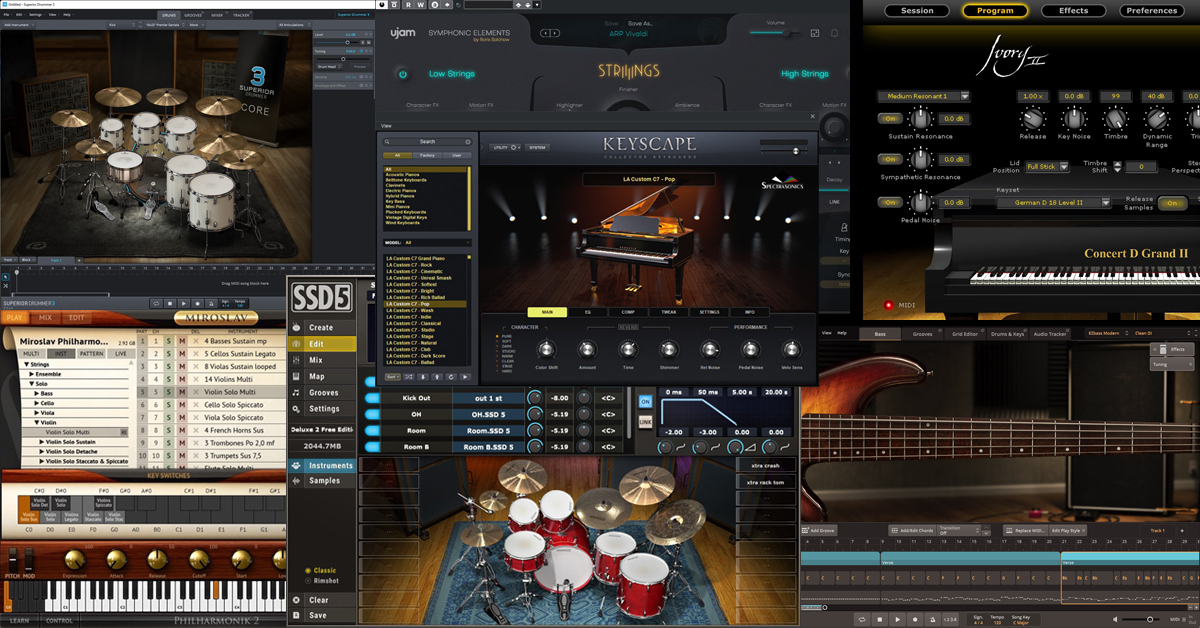In this serie:
In previous episodes we talked extensively about virtual instruments, or VSTs. But what exactly are they?
Virtual studio technology (VST) is a digital interface standard that is used to connect and integrate software audio effects, synthesizers and effect plugins with recording systems and audio editors (DAW). VST is basically a software emulation of hardware synthesizers, instruments and samplers, and often provides a custom user interface that mimics the original hardware down to knobs and switches. It provides recording engineers and musicians access to virtual versions of devices and equipment that might be otherwise too expensive or difficult to procure, or that are inexistant on marker as hardware.
There are many types of VST plugins, which can be mostly classified as instruments (VSTi) or effects. VSTi does exactly what its name implies, as it emulates different musical instruments so that the recording engineer or musician does not need to procure the specific instrument or find someone who can play it. Modern VST plugins provide their own custom GUI, but older ones tended to rely on the UI of the host software.
Steinberg released the VST interface specification and SDK in 1996. They released it at the same time as Steinberg Cubase 3.02, which included the first VST format plugins: Espacial (a reverb), Choirus (a chorus effect), Stereo Echo, and Auto-Panner.
Steinberg updated the VST interface specification to version 2.0 in 1999. One addition was the ability for plugins to receive MIDI data. This supported the introduction of Virtual Studio Technology Instrument (VSTi) format plugins. VST Instruments can act as standalone software synthesizers, samplers, or drum machines.
VST have a story: in 2006, the VST interface specification was updated to version 2.4. Changes included the ability to process audio with 64-bit precision. A free-software replacement was developed for LMMS that would be used later by other free-software projects.
VST 3.0 came out in 2008, and VST 3.5 in 2011. In October 2011, Celemony Software and PreSonus released Audio Random Access (ARA), an extension for audio plug-in interfaces, such as VST, allowing greater integration between audio plug-ins and DAW software.
VST 3.6.7 came out in March, 2017. A long story that make this technology solid and tested.
There are three types of VST plugins:
- VST instruments generate audio. They are generally either virtual synthesizers or virtual samplers. Many recreate the look and sound of famous hardware synthesizers.
- VST effects process rather than generate audio—and perform the same functions as hardware audio processors such as reverbs and phasers. Other monitoring effects provide visual feedback of the input signal without processing the audio. Most hosts allow multiple effects to be chained. Audio monitoring devices such as spectrum analyzers and meters represent audio characteristics (frequency distribution, amplitude, etc.) visually.
- VST MIDI effects process MIDI messages (for example, transpose or arpeggiate) and route the MIDI data to other VST instruments or to hardware devices.
VST plugins often have many controls, and therefore need a method of managing presets (sets of control settings).
Steinberg Cubase VST introduced two file formats for storing presets: an FXP file stores a single preset, while an FXB file stores a whole bank of presets. These formats have since been adopted by many other VST hosts, although Cubase itself switched to a new system of preset management with Cubase 4.0.
Many VST plugins have their own method of loading and saving presets, which do not necessarily use the standard FXP/FXB formats.
